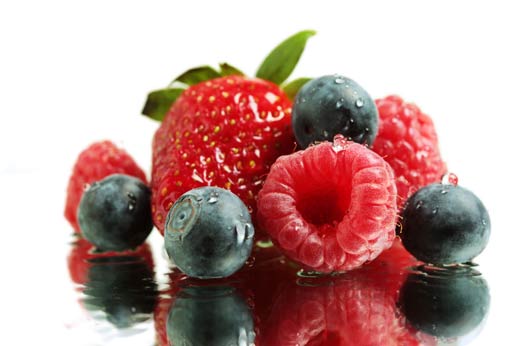
While it is generally difficult for large numbers of American to agree on the same issue, it seems when it comes to pets and the value we place on them, there is little disagreement. The 2011 American Pet Products Association (APPA) survey reported that an astounding 62% of all American households have a pet living with them.
An identified 46.3 million households have dogs for a total of 78.2 million. Cat households total 38.9 million, however, cats out number dogs with a 86.4 million total, which represents that cat pets are generally in multiple numbers in their respective households. Fresh water fish, birds, reptiles and horses, along with small animals such as rabbit, hamsters, and others make up another 25.3 million pets.
Americans, it appears, have also come to view and treat their pets in human terms. No longer satisfied with relegating the family pet to its own pet identified domain, today’s pet lovers are demanding the highest quality products and services for those they love and are also embracing their pets into all areas of the home.
The majority of pets today share beds and sleeping quarters in their households. This trend is not confined to the US however. The Jakarta Post, Asia News Network reported that “Having a pet allows a person to learn to take care of something and elevates the sense of caring, which positively supports the development of well-being,” said Monty P. Satiadarma, a psychologist at the Tarumanagara University in Jakarta. Pets are a hit around the world.
In terms of dollars and cents – expenditure on pets for 2010-2011 is in excess of 50 billion dollars. That is correct 50 billion. It is easy to imagine that this number must be a mistake as this represents more money being spent on pets in the United State than the gross national product for all but 64 countries around the world.
This 50 billion dollar figure also represents almost double the approximately $30 billion dollars Americans spend on popular activities such as going to movies, video games, or for listening to recorded music. Of the 50 billion spent on pets, 25 billion was spent on pet medical care and over the counter, as well as prescription medication, all without the benefit of health insurance to cover the cost.
The 38% of non-pet households are for the most part made up of individuals with allergies, who live in apartments or living environments that do not welcome pets and those who have no time left in their over scheduled lives to care for a pet. It seems people of all ages, ranging from infants to very elderly enjoy and welcome the company of pets.
The presence of pets is so popular today that nursing facilities host therapy pets on a regular basis. The one down side to this practice is that sometimes the residents start arguing and competing over who gets to keep the cat, dog or bird with them for the day.
What fuels our passion for pets? It is really quite simple. Our pets love us unconditionally. They listen to us, don’t complain or express disappointment in who we are. They provide companionship without the politics or agenda of most human relationships. They accept our love and affection the way we to give it and best of all – they happily return it.
Our pets are the ultimate loving family member and we are now treating them as such. Can anyone blame us? Social networking has become the way we communicate and “do” relationships. These days it is often over e-mail and text messages that we are starting relationships or ending them, sharing major life events – even proposing marriage. The intimate contact with other human beings even 10 years ago, before the dominance of the internet and cell phones, is being replaced by our pets.
The American Pet Product Manufacturers Association (APPMA) estimates that this year millions of pet owners will purchase a Valentine’s gift for their pet, spending an average of $17 for the gift. Consumers will also spend an average of $6.30 on friends, $4.97 on classmates and teachers, and $3.41 on co-workers. What does this tell us?
Pets are not only beloved companions, but are also healers. Dogs have long been known for their service as seeing-eye dogs, but the use of dogs and other pets in numerous areas of healing and health monitoring are becoming widely utilized. Dogs who alert their companions for seizures or “sniff out” cancer, or pigs and horses that assist with helping draw out autistic children are easily found on the news or the internet. Therapy cats lower blood pressure, slow down heart rate and reduce depression and stress while providing companionship and affection.
A study by researcher Dr. Karen Allen, at the State University of New York, at Buffalo, identified that individuals suffering from hypertension after adopting a dog or cat had lower blood pressure reading during stressful situations than their counter parts who did not have a pet companion.
The National Institute of Technology Assessment Workshop, Health Benefits of Pets, identified that pets provide greater psychological stability which protects not only from heart disease and other stress related conditions but also reduces depression. In the same study pets have been shown to lower the cost of health care as individuals with pets make fewer doctor visits, especially “for non-serious medical conditions”.
A Perdue University study demonstrated that when seniors face traumas or other adversity, the affection received from their pets and the bond between them, helps prevent depression and loneliness. Animals provide emotional support, which is an essential component for health and healing.
Pets enhance our psychological and physical well being. They love us, heal us and help us live longer and often provide more honest, non-judgmental and loving relationships than our human companions. Perhaps the health care reformists should modify Harry Truman’s “chicken in every pot” to “a pet in every home” to improve the health of Americans and reducing healthcare costs.
All the best,
G
Copyright 2011 G. Donadio










